Posted on July 11, 2022
By LabLynx
Journal articles
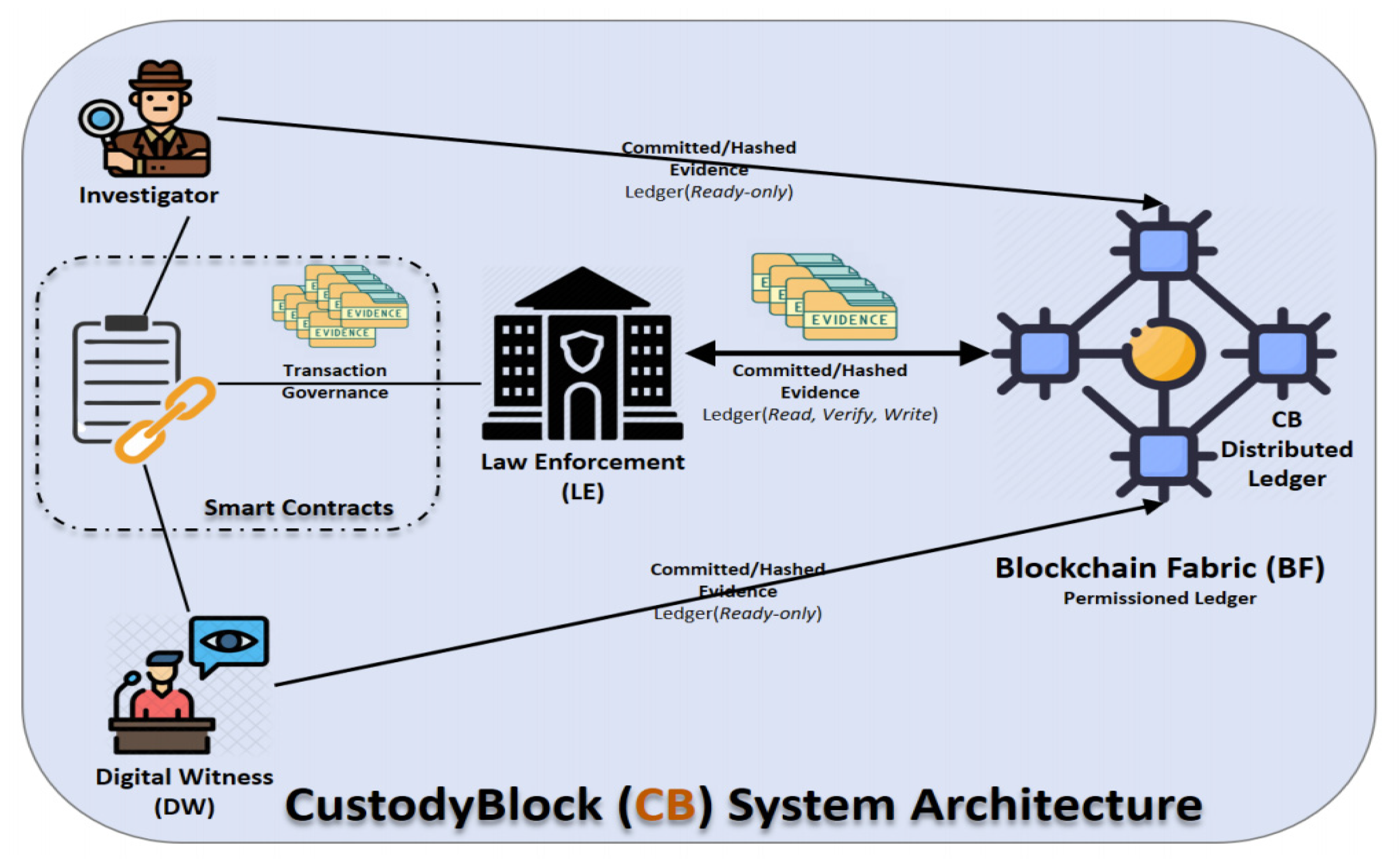
In this 2021 article published in the journal
Information, Alruwaili presents their framework "for better and more secure evidence preservation and handling" in digital forensics: CustodyBlock. Noting the importance of evidence management and the complexities that come with it, the author's framework turns to "private blockchain protocol and smart contracts to support the control, transfer, analysis, and preservation monitoring of forensic evidence." After discussing the related research and justification for such a framework, Alruwaili briefly covers research methodology, digital evidence custody, and the architecture and algorithm for their framework. After a brief discussion of the results, the author concludes that the framework demonstrates strong protection of the evidence chain and a more robust handling methodology, with the potential to handle information beyond that of digital forensics.
Posted on July 4, 2022
By LabLynx
Journal articles
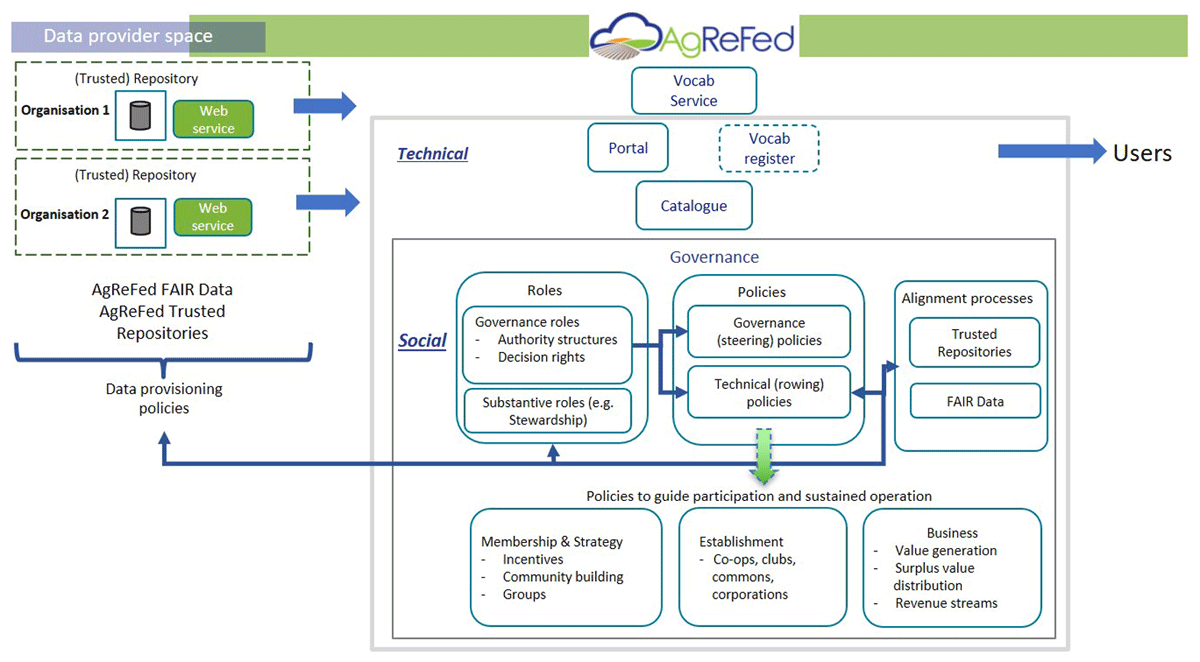
Continuing from last week's theme of agriculture data management, this week's journal article from Wong
et al. examines the need for consistent "minimum thresholds" for FAIR (findable, accessible, interoperable, and re-usable) data in the agricultural research community. They discuss this in terms of their "community-governed federation approach" called AgReFed (Agricultural Research Federation), which has been piloted since 2018. Using a variety of datasets and research use cases, the authors go on to discuss their methodology for developing and testing FAIR thresholds in their pilot community, as well their governance and implementation. The authors close out their work by discussing the benefits of the approach to founding partners, including "being an exemplar of FAIR best practice at the institutional level, making access and re-use easier for end-users, and being able to combine data types for research insights." Data providers "benefited from metadata guidance through education resources, library, and licensing support." However, the authors note that expansion of such a framework to other coops, corporations, etc. understandably may require additional incentivization.
Posted on June 27, 2022
By LabLynx
Journal articles

As the promise of "smart farming" and "precision agriculture" begins to emerge, it is increasingly clear that—like other areas of research and industry—effective data management, analysis, and visualization is increasingly important. In the case of sustainable farming and other agricultural similar endeavors, this means tapping into wide varieties of data to improve operational efficiency, crop yields, and automated tasking. In this 2021 paper by Giray and Catal, a data management reference architecture providing common vocabulary and templated solutions for agriculture software developers is discussed. The authors note their reference architecture is based off three agriculture-specific use cases, as well as other related reference architecture studies. After describing the domain scoping and modeling aspects of their data management reference architecture, they discuss its validation and practical use. They conclude that while the study focused on sustainability within agricultural domains, "it can be extended to a larger context by covering other critical aspects of agriculture," demonstrating "that the proposed data management reference architecture is practical and effective."
Posted on June 21, 2022
By LabLynx
Journal articles
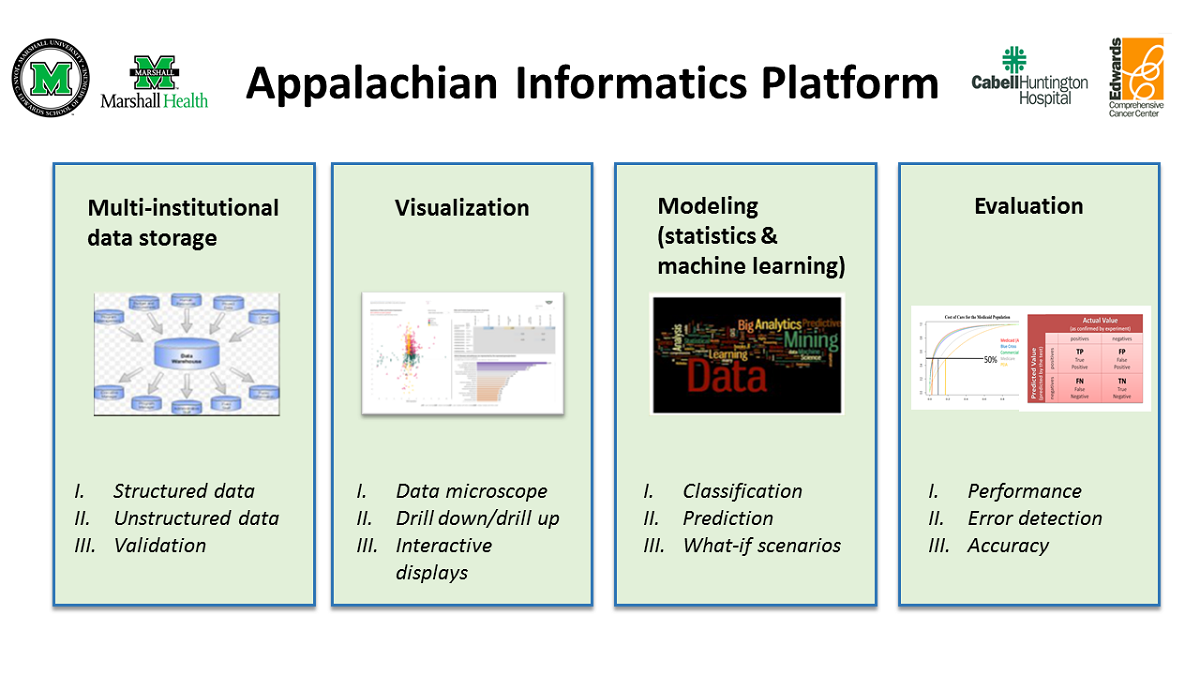
In this 2020 paper published in
JMIR Medical Informatics, Cecchetti
et al. of the Joan C. Edwards School of Medicine at Marshall University present their health informatics platform, the Appalachian Informatics Platform (AIP). Designed to support "research efforts by enabling curation and analysis of data using the different components," the platform is described in detail following the presentation of necessary background information on the unique informatics and healthcare challenges of the Appalachia region. After describing their methodology and results, the authors discuss the perceived utility of AIP and conclude that AIP is indeed useful in "enabling seamless and secure data access, model development through an analytics engine to explore novel and unexpected hypotheses, and simple yet effective communication of all findings via interactive visualization."
Posted on June 20, 2022
By LabLynx
Journal articles
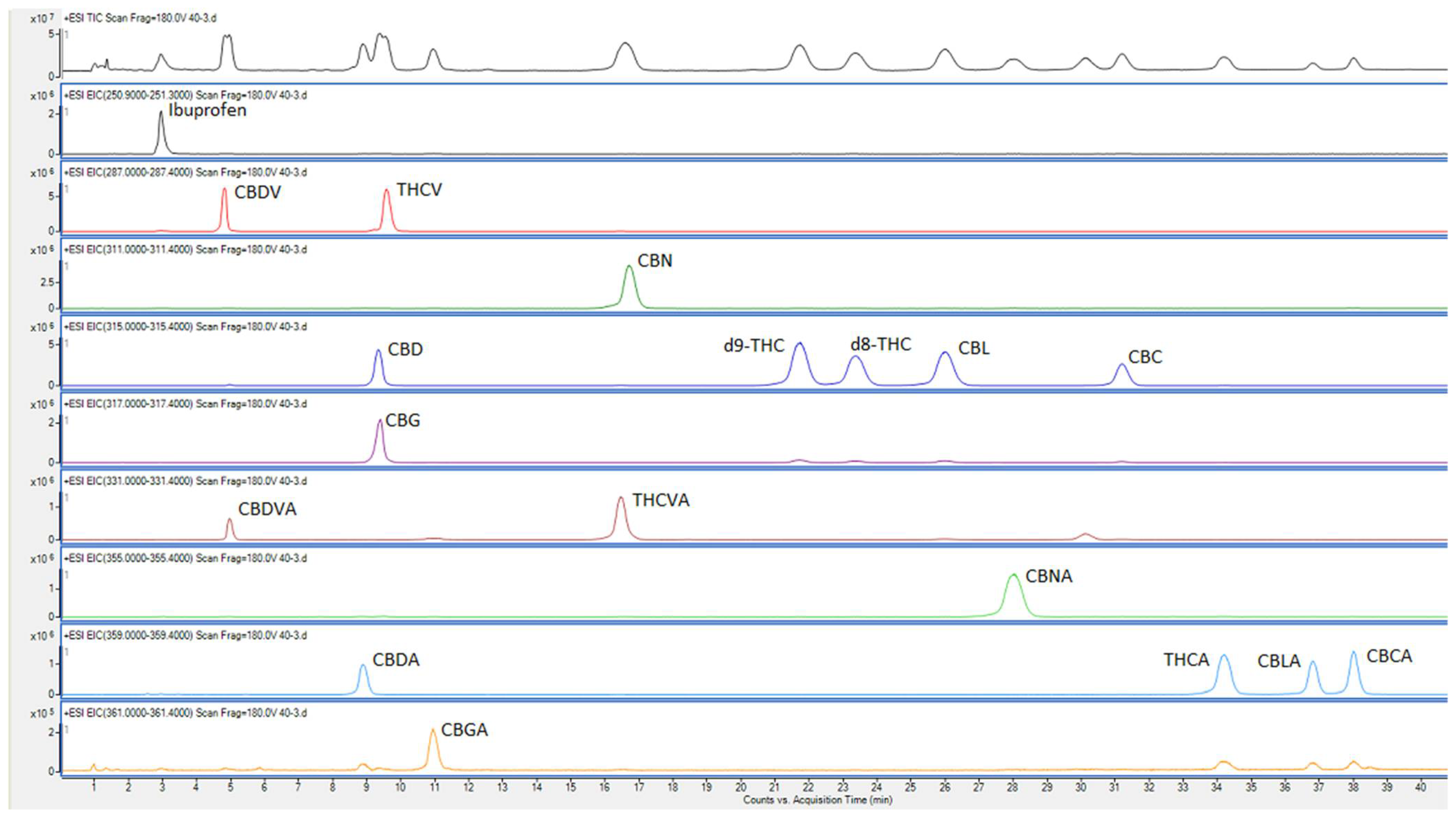
In this 2022 paper published in
Separations, Hewavitharana
et al. examine a more simplified means of quantifying cannabinoids using liquid chromatography–mass spectrometry (LC-MS) with a low flow rate rather than a more expensive ultra-high-performance liquid chromatography (UHPLC) system. After descrribing their materials and methods used, the authors discuss the optimization of their extraction method, as well as the optimization of chromatographic separation and mass spectrometry, and how the processes were validated. They conclude that "the main advantage of using this approach is that the method can be easily adapted to use with a simple HPLC-MS (single quadrupole) system," and that "the method is well suited for routine phytocannabinoid analysis across a range of applications in a variety of laboratory settings."
Posted on June 14, 2022
By LabLynx
Journal articles
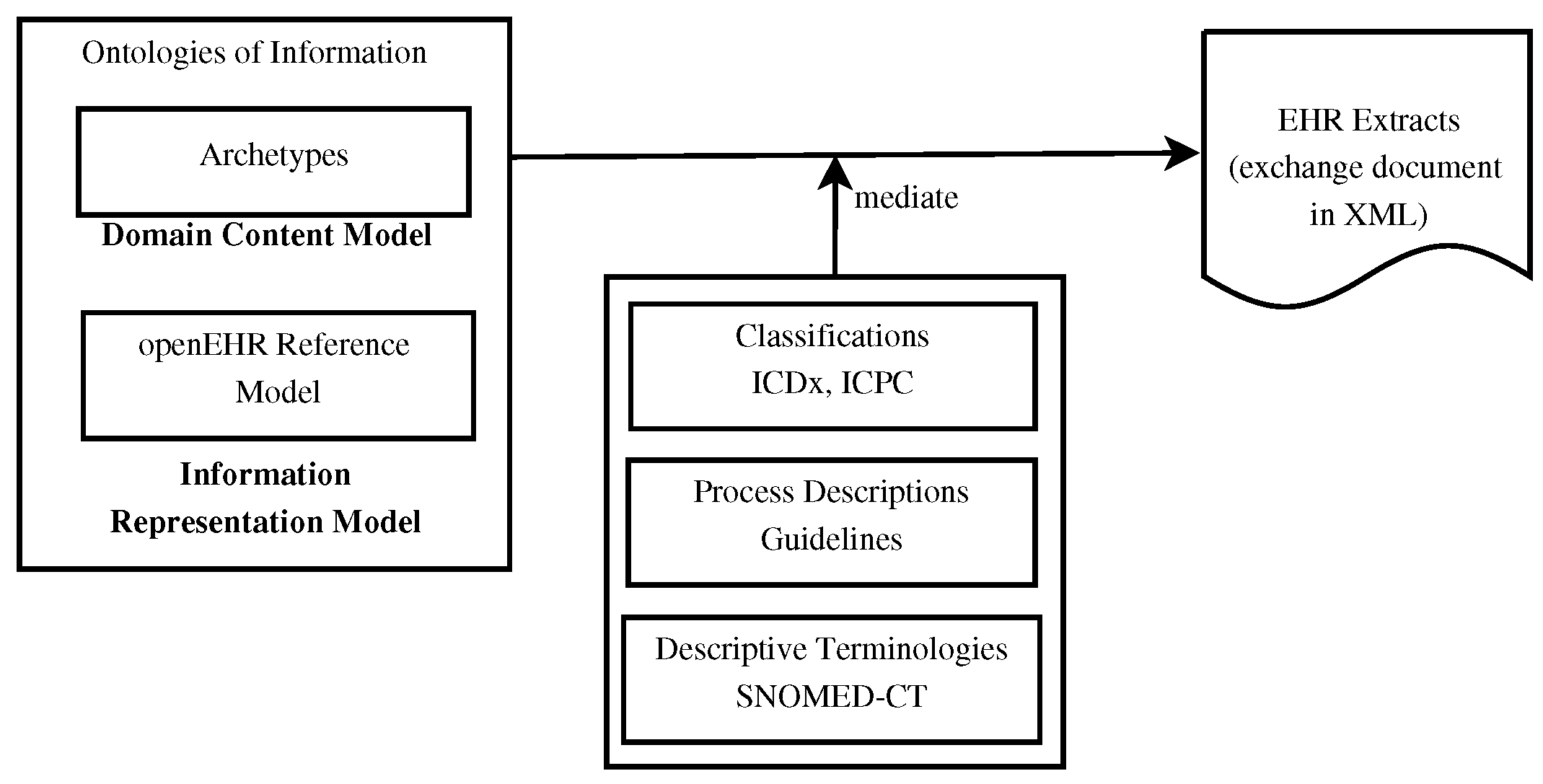
In this 2022 paper published in the journal
Information, Sachdeva and Bhalla of the National Institute of Technology Delhi examine electronic health records (EHRs) and their requirement for interoperability from a semantic and archetype point of view. After providing an overview of EHRs and their standards for semantic interoperability, the authors discuss how to better achieve more secure and more accurate data interoperability through the use of semantic-based archetypes. They then discuss knowledge representation and the five most common approaches to it, addressing specifically ADL, XML, OWL, and other formalisms. They then evaluated some of the best approaches and discussed their strengths and drawbacks. After brief discussion, the authors conclude that while semantic interoperability is essential to "evidence-based healthcare across heterogeneous EHR systems," areas of study are still lacking in regards to "direct support for mapping to formal ontologies." They suggest that ADL and OWL have their own strengths, compared to XML that has more weaknesses despite being a more global standard.
Posted on May 31, 2022
By LabLynx
Journal articles
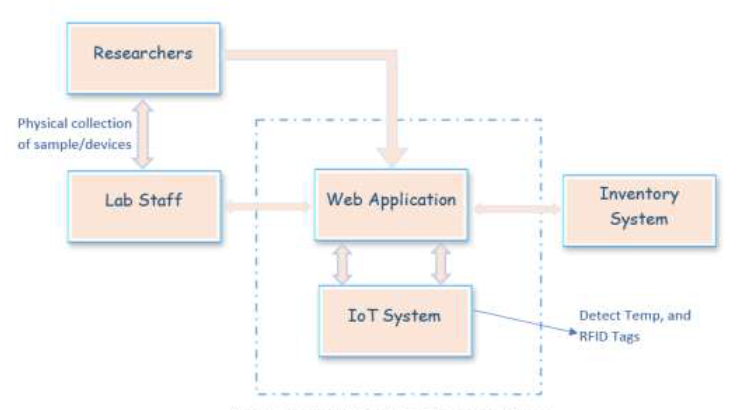
We hear case studies of laboratory automation implementations from time to time, usually in larger facilities that can afford the expense. But what of smaller labs in developing countries? With sensors and open-source technologies gaining ground—and application development becoming more commonplace—automating small labs in small ways isn't so distant a reality. This 2022 paper by Mwambe
et al. of the Nelson Mandela African Institution of Science and Technology demonstrates this, providing details of their smart laboratory information management system (LIMS) and hardware-based automation solutions in their labs. After introducing the concept behind their software+hardware solution, the authors go over the design and implementation of their smart LIMS. They conclude that their system of LIMS, RFIF, IoT, and sensor networks effectively "automate recurring tasks in laboratories, aid in monitoring, and eliminate paper-based record keeping. Using such a smart LIMS, researchers can better plan research activities."
Posted on May 23, 2022
By LabLynx
Journal articles
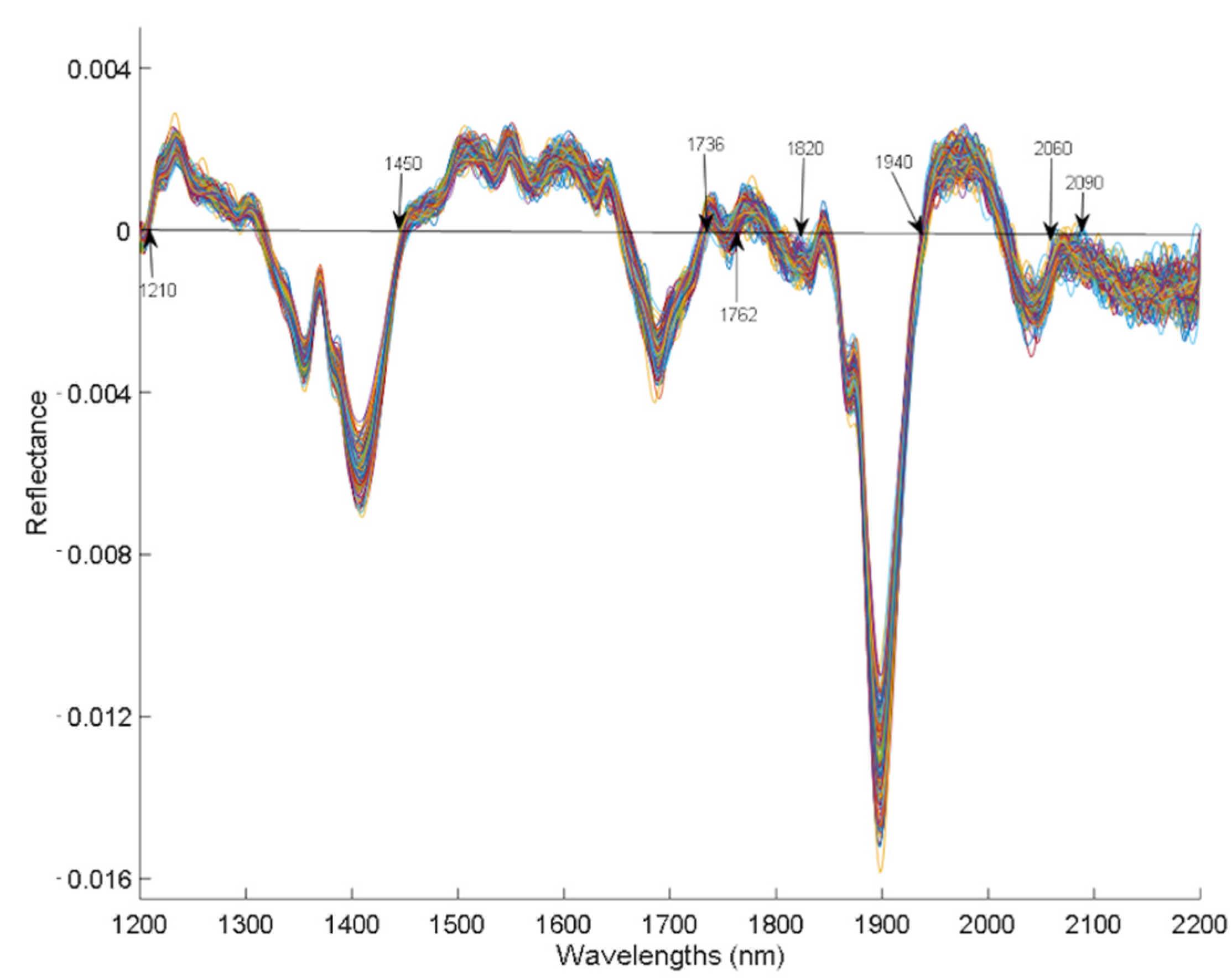
There are many approved methods for analyzing the cannabinoids from a given sample of the
Cannabis plant, though some of them have downsides for the analyst. This is particularly notable in sample with significant quantities of acidic cannabinoids, which decarboxylate to their neutral cannabinoids with heat. This usually requires more non-destructive methods, such as near-infrared spectroscopy (NIRS). In this 2022 journal article, Jarén
et al. of Universidad Pública de Navarra and Genscore Navarra S.L. in Spain provide their take on using NIRS methods combined with chemometric techniques to get quality results in analyzing cannabinoids, in comparison to using high-performance liquid chromatography (HPLC). After introducing the current background on analytical methods for cannabinoid analysis, the authors describe their methodology and results. They conclude that "[t]he results obtained here demonstrate that NIR spectroscopy offers speed and simplicity unmatched by other traditional techniques." They add that "[a]ccordingly, it was tested as an alternative to conventional HPLC analysis for the evaluation of cannabinoid content, with promising results."
Posted on May 17, 2022
By LabLynx
Journal articles
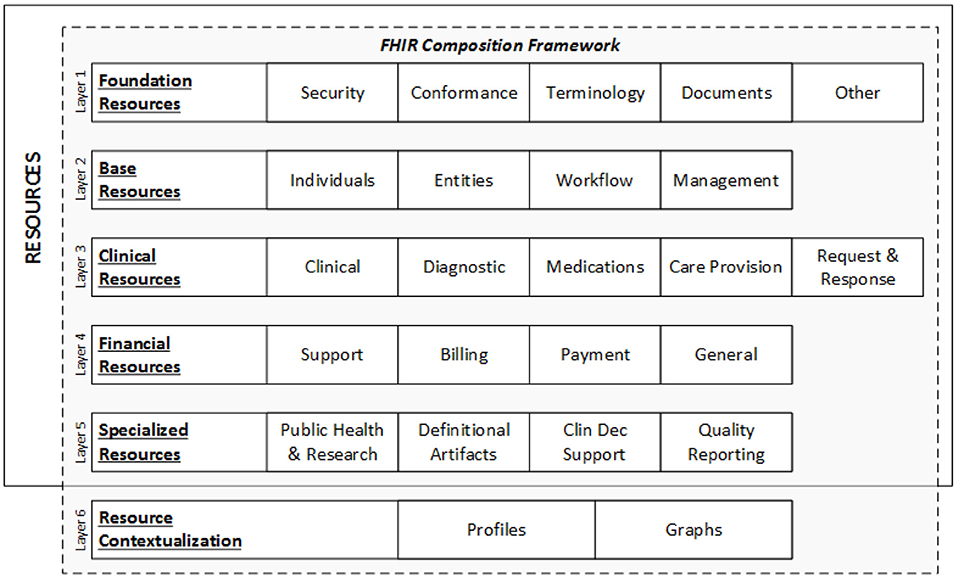
In the United States, Europe, and other parts of the world, the application of health informatics technologies continues to mature. However, in emerging economies such as India, China, and Bangladesh, the concept of health informatics and its application is still relatively new. In this 2022 paper published in
Frontiers in Public Health, Yogesh and Karthikeyan discuss health informatics from the perspective of such emerging markets, the challenges those markets face, and the policies and standards required to ensure positive public health outcomes. The duo first introduce the topic health informatics and the breadth of technologies affecting it, including machine learning and deep learning. They also provide a few examples of related work on the topic before getting into how the Health Level 7 FHIR architecture plays an important role in health informatics. The authors then provide further perspectives on the current state of the art and future trends in health informatics, including from the perspective of India's medical system. They close by discussing a number of challenges India and other countries face in adopting health informatics tools, concluding that despite its promise, health informatics implementations are rarely straightforward. "There are no proven design blueprints for such a comprehensive infrastructure, and the goal is always shifting due to the nature of real-time patient, medical, and equipment data collection from a variety of sources," they add.
Posted on May 10, 2022
By LabLynx
Journal articles
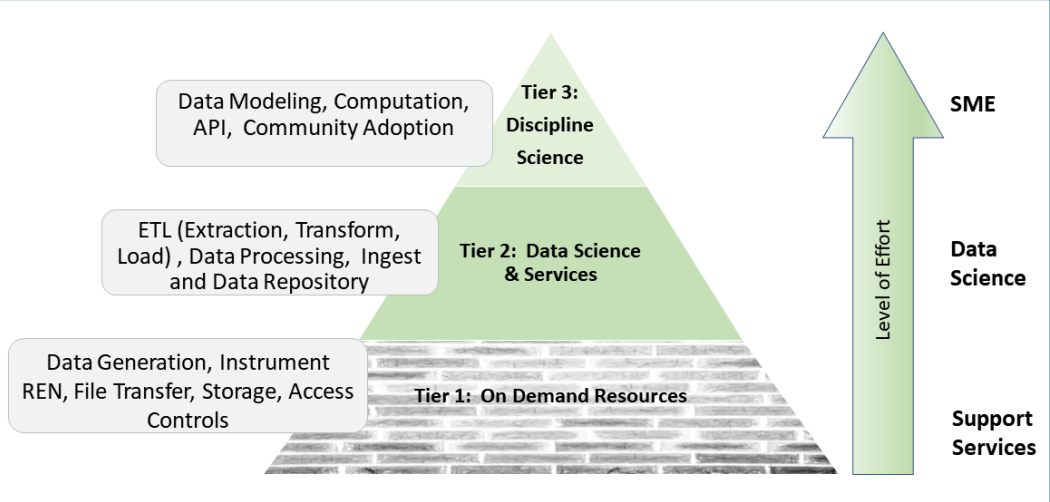
This April 2022 Technical Note from the National Institute of Standards and Technology (NIST) and its Material Measurement Laboratory investigates the laboratory information management system (LIMS) within the scope of the laboratory's strategic mission and goals "to support a wide array of research disciplines." Greene
et al. provide a roadmap of implementing LIMS and related technologies and adapting their research workflows to get the most of LIMS while also taking advantage of FAIR Data Principles. After a brief introduction, the authors describe both their short- and long-term objectives towards the lab's vision of implementing LIMS effectively, along with the associated challenge of meeting those objectives. They then discuss the related stakeholders and how they impact implementation of the LIMS roadmap. The authors also discuss LIMS architecture and quality metrics associated with its implementation, before concluding that their "next-generation LIMS will provide standards for interoperability and collaboration, further enabling scientific investigation spanning across experimental groups."
Posted on May 3, 2022
By LabLynx
Journal articles
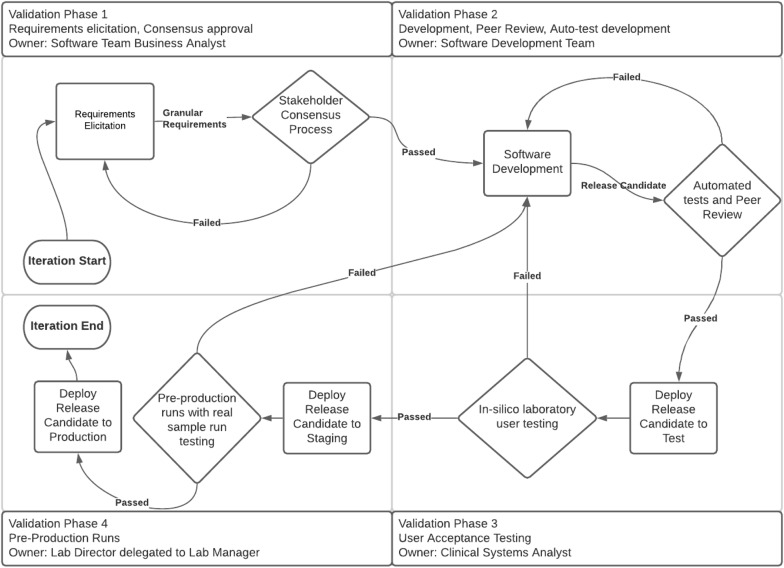
In this 2022 paper published in
The Journal of Molecular Diagnostics, the Molecular Pathology Section of Cleveland Clinic describes its collaboration with Semaphore Solutions in order to customize a laboratory information management system and other tools to meet the needs of Cleveland Clinic's molecular pathology department. The authors first describe their goals, technology approach, and software approach within the framework of project development and management, including validation steps. They then provide details about how their implementation affected their work. They conclude that "a significant amount of customized software engineering" was required to get a system that met their needs, as was a Scrum-based development approach, "which may be emulated for scalable and cost-effective laboratory-authored software." They also add that "[a]n important lesson learned in executing the LIMS project was the concept of a minimally viable product (MVP)."
Posted on April 26, 2022
By LabLynx
Journal articles
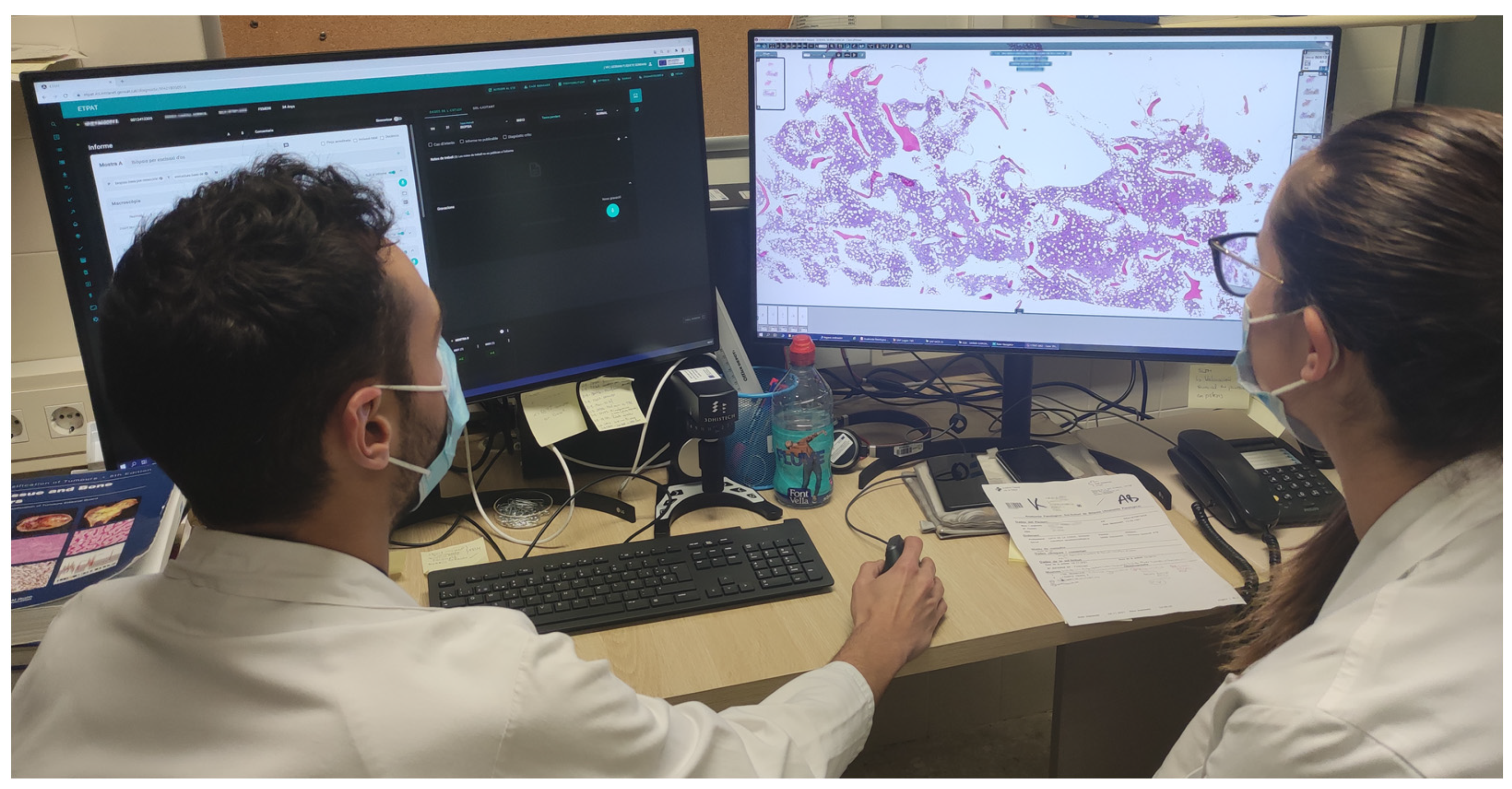
In this 2022 paper published in the journal
Diagnostics, Temprana-Salvado
et al. of the Catalan Health Institute present the initial results of their DigiPatICS program, implemented across eight hospitals in the network. DigiPatICS, a digital pathology implementation initiative, was initiated "to increase patient safety and quality of care, improving diagnosis and the efficiency of processes in pathological anatomy departments of the ICS using digital pathology and AI tools." However, it was not a straightforward process, requiring significant planning, After describing their planning steps, the project scope, and tender process, the authors describe multiple aspects of their approach, including the instruments, hardware, software, laboratory information system (LIS), networking, data centers, imaging standards, and AI components. After discussing the results of their implementation, the authors concluded though "[t]he digital transformation of a pathology department represented a technological, organizational, and functional challenge ... [it] provided an effective and safe diagnostic tool with clear benefits for diagnosis quality and patient safety."
Posted on April 19, 2022
By LabLynx
Journal articles
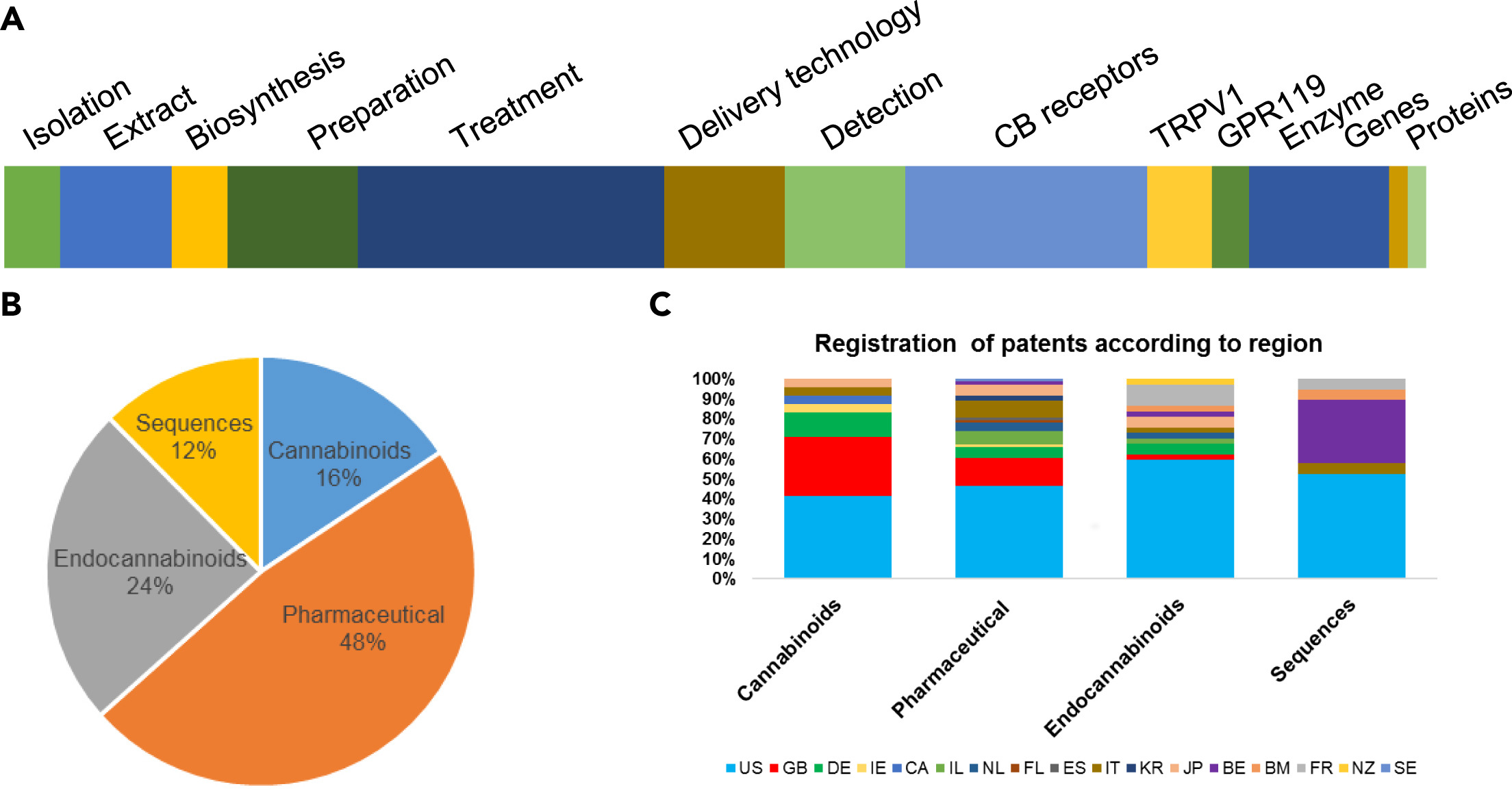
In this 2021 journal article published in
iScience, Hussain
et al. of TU Dortmund University review more than two centuries of cannabis research and discuss its transition from herbal medicine to illegal drug, and back again. After a brief introduction, the authors lay out their review first by examining research trends dating back to 1783 and then discussing the modern understanding of
Cannabis sativa L. in the scope of physiology and legal status. The authors then look at the genomic and transcriptomic analyses of the
Cannabis plant and where that is pushing research and laboratory analysis. They also discuss therapeutic potentials revealed during COVID-19, as well as how some cannabis research has led to issues in the realm of patenting. They conclude that as research and testing trends continue to advance (e.g., as with AI-based genetic and molecular analysis), it will be "possible to obtain enhanced expression rates, which will lead to enhanced cannabinoid yields in an economically feasible manner," and pharmacological research advances will likely further highlight the "tremendous potential in drug discovery."
Posted on April 12, 2022
By LabLynx
Journal articles

As a natural extension of the paper lab notebook, the electronic laboratory notebook (ELN) is an important component of modern research activities. However, as calls for reproducibility and data provenance in research grow, the voracity and semantic documentation of research data and experiment protocols logged in ELNs grows more important. In this 2022 paper from the
Journal of Biomedical Semantics, Schröder
et al. address this sort of semantic documentation of experiment protocols and take their own structure-based approach to doing it, using a biomedical wet lab experiment in an ELN as a test case. The authors present background information, related work, and information about their use case and approach to the task. After presenting and discussing the results of their semantic documentation efforts, they conclude that their "structure-based approach, in combination with RO-Crate bundling, can be used to successfully document research data based on the description in the form of ELN protocols." They add that bundling of the information into RO-Crate better enables "the sharing, publication, and archiving of the research data in terms of the FAIR principles."
Posted on April 5, 2022
By LabLynx
Journal articles
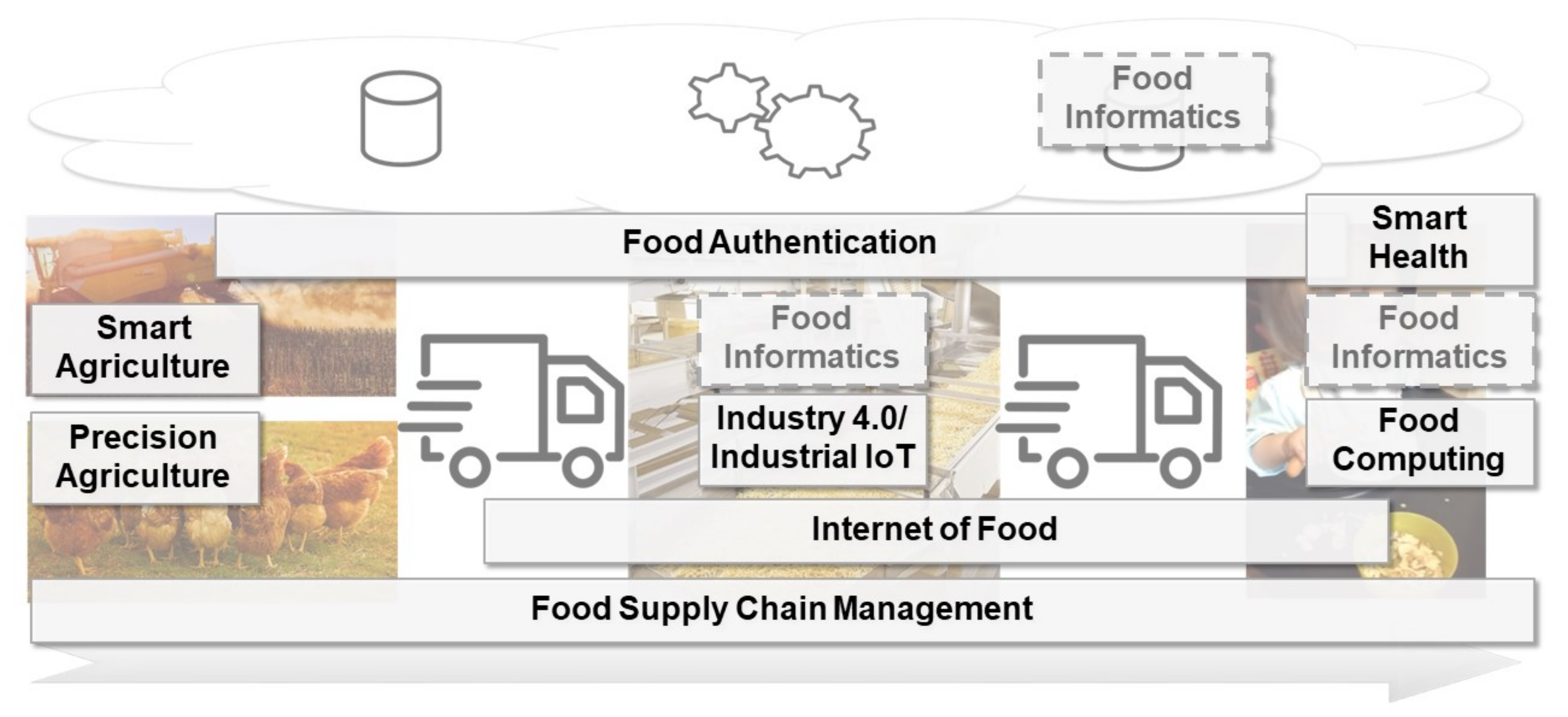
Informatics, the study of information processing and management, has moved into many industries over the past few decades, and the food manufacturing and testing field is no different. Food informatics has evolved as a sub-branch of informatics that assesses how food-related activities can be improved for not only manufacturers but also consumers, using information technologies. This 2021 paper by Krupitzer and Stein examines the state of food informatics and proposes an updated definition that encompasses the state-of-the-art in food technologies and how they are used in the manufacturing and research landscape. After discussing numerous concepts important to food informatics, the authors propose their own definition and discuss how it applies to the practical use of tools like autonomous robotics, artificial intelligence (AI), machine learning (ML), internet of things (IoT), predictive maintenance, and more. They conclude that while "various research streams focus on different aspects of the production process ... they miss the methods and approaches that can be applied across several steps along the food production process." They add that the mindful addition of technologies like AI and IoT has high potential "to optimize the various aspects and processes concerning food production, consumption, and security."
Posted on March 29, 2022
By LabLynx
Journal articles
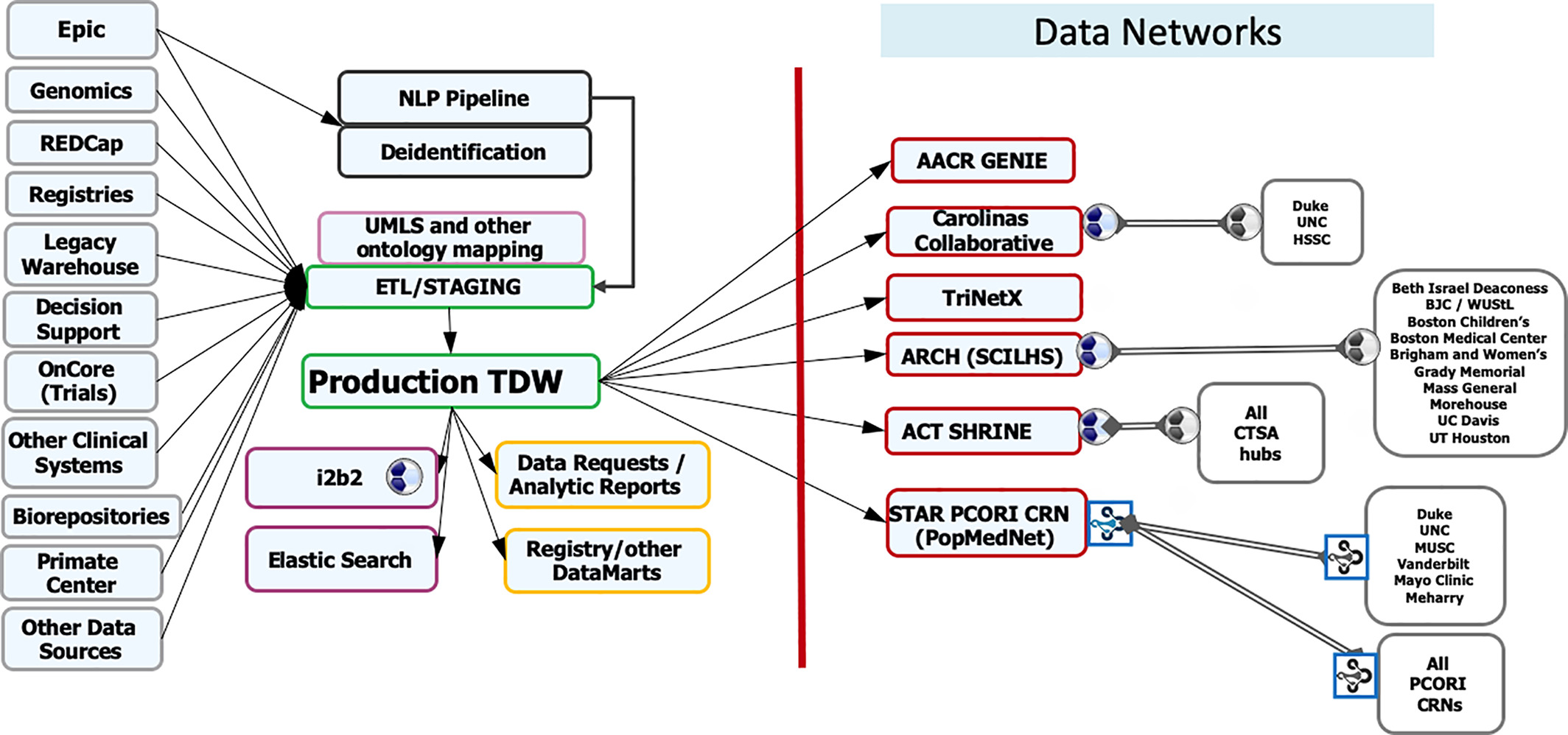
In this 2022 paper published in the journal
Learning Health Systems, Kohn
et al. of Wake Forest School of Medicine's Center for Biomedical Informatics describe the evolution of an academic biomedical informatics program in the scope of a "learning health system" (LHS) and improving decision making in the clinical field. The authors first provide background information on topics such as artificial intelligence (AI) and machine learning (ML) and how they they are trained upon and accepted within the clinical community. They then describe the concept of the LHS and what is required to understand and utilize it well, followed by full details of their biomedical informatics program and its incorporation of LHS at Wake Forest. The authors conclude that programs such as its Clinical Scholars in Informatics (CSI) program "can be broadly applied to most internal medicine programs across the United States" and that such programs clearly provide "bidirectional net benefits for the resident physicians and for the health system as a whole." They add that enabling clinical students in "understanding the role of AI and predictive analytics, and how to apply them, will become progressively more important" as the era of big data continues to grow.
Posted on March 22, 2022
By LabLynx
Journal articles
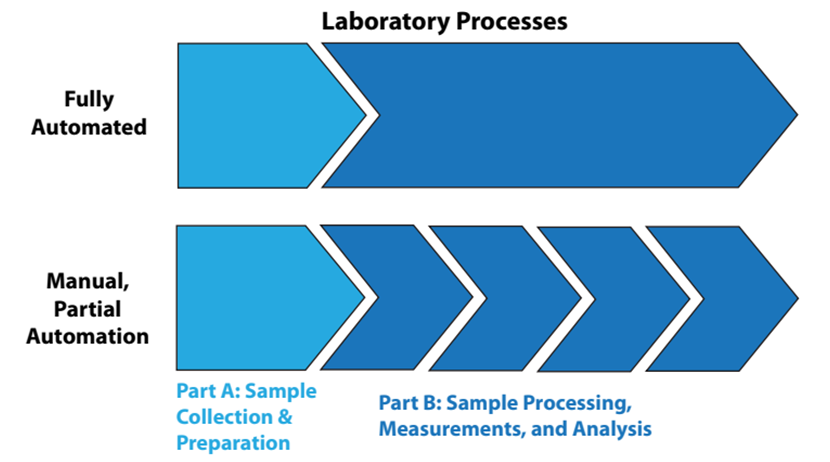
Most know that the COVID-19 pandemic turned a solid chunk of the workforce—and their work itself—on its heels. More than two years later, this change has both positively and negatively affected many a workplace, including the laboratory. In this March 2022 work by laboratory veteran Joe Liscouski, the impact of disruptions like COVID-19, flooding, and power failure to laboratories is discussed, particularly within the scope of implementing automation to better limit those disruptions. However, as Liscouski notes, it's not as simple as "let's implement laboratory automation"; many nuances to its implementation and use exist within the context of laboratory work. The author first discusses the nature of work itself, followed by a brief look at laboratory work. He then examines eight talking points about using automation to prevent disruptions in on-site laboratory activities, as well as a few critical points about the laboratory work that can be done remotely. He finishes by discussing other external disruptions to laboratory work, including meteorological issues, natural disasters, power disruptions, and supply chain issues. Liscouski concludes that while laboratory automation is here to stay by improving workflows and limiting disruptions, we must implement it with care and deliberate planning in order to make the most of it.
Posted on March 15, 2022
By LabLynx
Journal articles
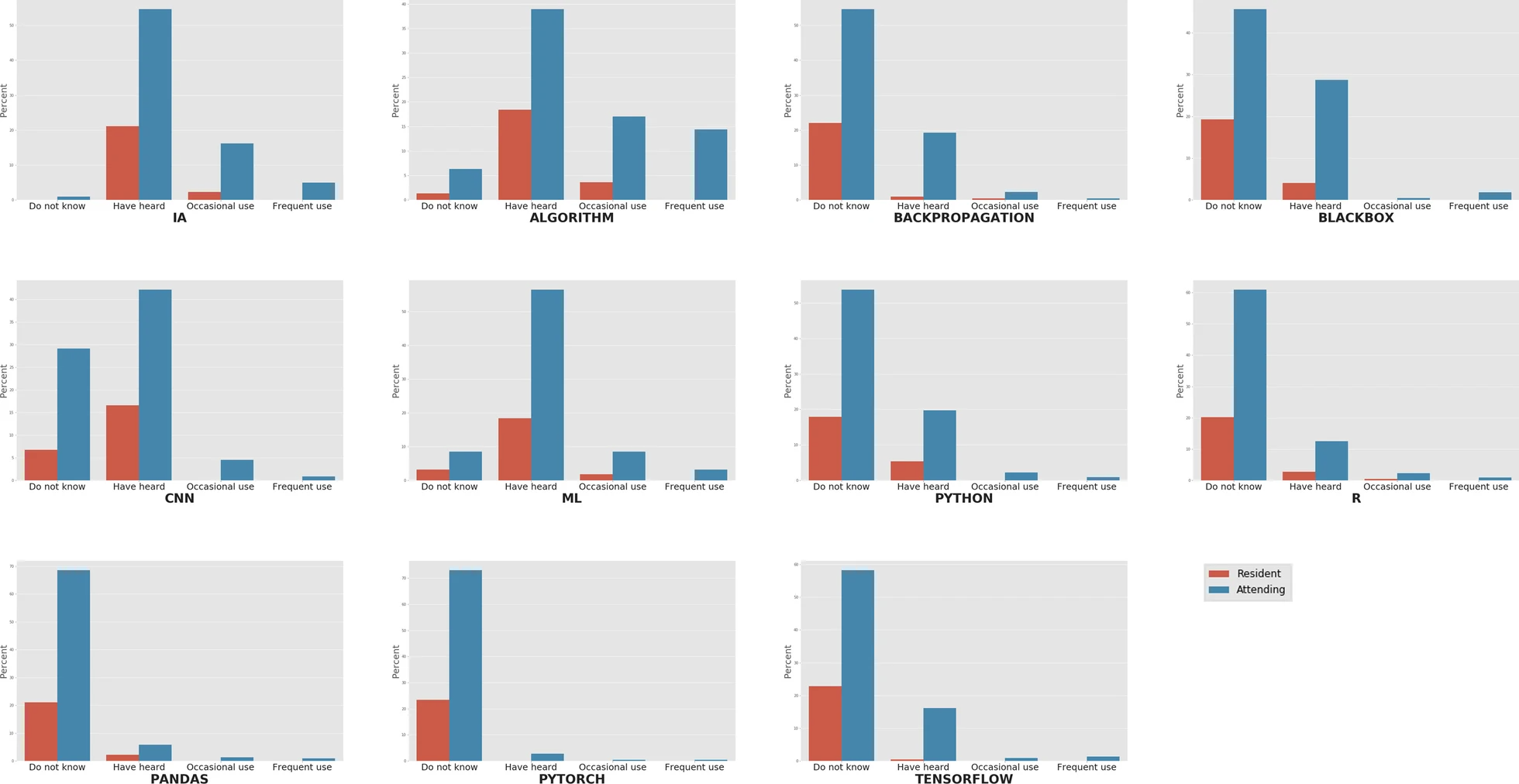
Artificial intelligence (AI) has been discussed in many healthcare contexts over the years, and this includes within the medical imaging field. But how aware are imaging specialists of AI and machine learning (ML) methods in imaging informatics, and what knowledge gaps must be filled to address concerns about misuse of patient safety with AI and ML in medical imaging? This survey-based research by Eiroa
et al. examines the responses to numerous questions related to AI and ML by Spanish radiologists and suggests there are several information gaps that must be addressed. After a brief introduction and discussion concerning the survey methods, the authors present their results in numerous tables and images, followed by a discussion of that data in the scope of current and new radiologists entering the field. They conclude that "there is a general lack of knowledge about AI, ML, and related topics among Spanish radiologists, including both members in training and attending physicians," though there was an eagerness to learn and little fear of such automated methods taking away radiology jobs. They add that "there is no doubt that a common consensus is needed to change the current training curriculum to prepare new radiologists for a future world in which AI will undoubtedly shape the profession."
Posted on March 8, 2022
By LabLynx
Journal articles
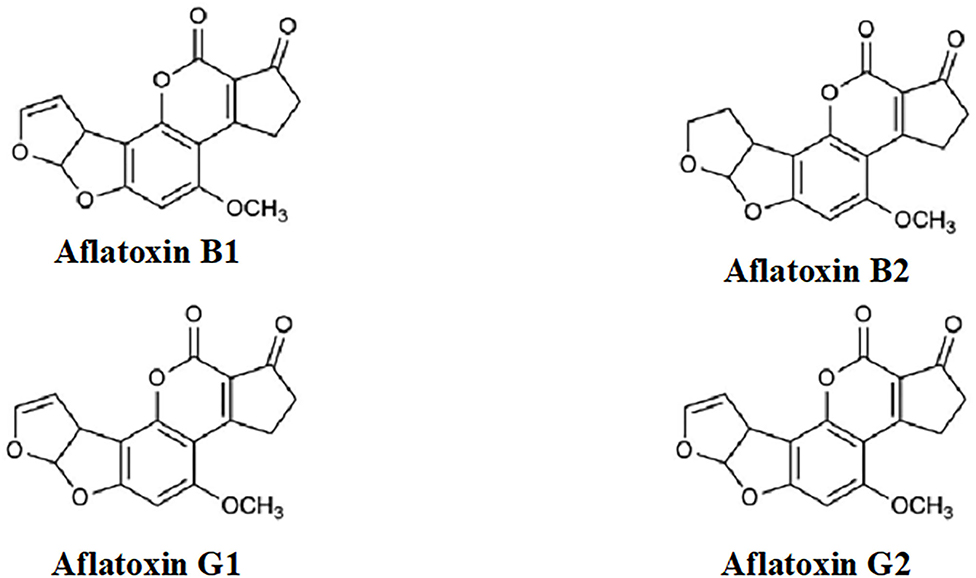
Mycotoxins, toxic secondary metabolites produced by fungi, have been known to be a significant concern in cannabis testing, particularly when considering medical cannabis patients. Plant material must certainly be tested for mycotoxins, but what about extractions created from that plant material? Do mycotoxins in the plant transfer to the extracts? This journal article by Serafimovska
et al. provides the results of research examining that issue. The authors first provide background about mycotoxins and cannabis, and then they discuss the materials and methods (as well as their validation) used in their research. In their discussion and concluding remarks, they note that making extracts from plant materials with the maximum allowed amount of mycotoxins added to them produced extracts with mycotoxins "in an amount much higher than the amount in which we added them." They add: "With this experiment, we have shown that aflatoxins as extremely toxic secondary metabolites, can reach critical values in cannabis extracts obtained from dry cannabis flowers with the maximum allowed quantity of aflatoxins ... [and] can pose a great risk to consumers and their health, especially to those with compromised immune systems."
Posted on March 1, 2022
By LabLynx
Journal articles
In this brief article published in the journal
Advances in Radiation Oncology, Joyce
et al. state the case for the journal's move to develop a special manuscript category dedicated to cybersecurity issues as they relate to the field of radiation oncology. They review numerous cybersecurity incidents that occurred in 2021, which disrupted healthcare efforts, sometimes severely. In one case, the authors find the effects of a ransomware attack on a cancer treatment center in New Zealand to be worse than those effects of the COVID-19 pandemic. Additionally, the authors address the problems that come with not being able to rapidly access patient medical records, "causing delayed treatment for thousands of patients" in some cases. The discussion of these and other similar incidents leads to a non-exhaustive list of what oncology departments can do to improve preparedness for cybersecurity incidents, including maintaining offline, encrypted back-ups and implementing a user awareness training program.
 In this 2021 article published in the journal Information, Alruwaili presents their framework "for better and more secure evidence preservation and handling" in digital forensics: CustodyBlock. Noting the importance of evidence management and the complexities that come with it, the author's framework turns to "private blockchain protocol and smart contracts to support the control, transfer, analysis, and preservation monitoring of forensic evidence." After discussing the related research and justification for such a framework, Alruwaili briefly covers research methodology, digital evidence custody, and the architecture and algorithm for their framework. After a brief discussion of the results, the author concludes that the framework demonstrates strong protection of the evidence chain and a more robust handling methodology, with the potential to handle information beyond that of digital forensics.
In this 2021 article published in the journal Information, Alruwaili presents their framework "for better and more secure evidence preservation and handling" in digital forensics: CustodyBlock. Noting the importance of evidence management and the complexities that come with it, the author's framework turns to "private blockchain protocol and smart contracts to support the control, transfer, analysis, and preservation monitoring of forensic evidence." After discussing the related research and justification for such a framework, Alruwaili briefly covers research methodology, digital evidence custody, and the architecture and algorithm for their framework. After a brief discussion of the results, the author concludes that the framework demonstrates strong protection of the evidence chain and a more robust handling methodology, with the potential to handle information beyond that of digital forensics.
 Continuing from last week's theme of agriculture data management, this week's journal article from Wong et al. examines the need for consistent "minimum thresholds" for FAIR (findable, accessible, interoperable, and re-usable) data in the agricultural research community. They discuss this in terms of their "community-governed federation approach" called AgReFed (Agricultural Research Federation), which has been piloted since 2018. Using a variety of datasets and research use cases, the authors go on to discuss their methodology for developing and testing FAIR thresholds in their pilot community, as well their governance and implementation. The authors close out their work by discussing the benefits of the approach to founding partners, including "being an exemplar of FAIR best practice at the institutional level, making access and re-use easier for end-users, and being able to combine data types for research insights." Data providers "benefited from metadata guidance through education resources, library, and licensing support." However, the authors note that expansion of such a framework to other coops, corporations, etc. understandably may require additional incentivization.
Continuing from last week's theme of agriculture data management, this week's journal article from Wong et al. examines the need for consistent "minimum thresholds" for FAIR (findable, accessible, interoperable, and re-usable) data in the agricultural research community. They discuss this in terms of their "community-governed federation approach" called AgReFed (Agricultural Research Federation), which has been piloted since 2018. Using a variety of datasets and research use cases, the authors go on to discuss their methodology for developing and testing FAIR thresholds in their pilot community, as well their governance and implementation. The authors close out their work by discussing the benefits of the approach to founding partners, including "being an exemplar of FAIR best practice at the institutional level, making access and re-use easier for end-users, and being able to combine data types for research insights." Data providers "benefited from metadata guidance through education resources, library, and licensing support." However, the authors note that expansion of such a framework to other coops, corporations, etc. understandably may require additional incentivization.
 As the promise of "smart farming" and "precision agriculture" begins to emerge, it is increasingly clear that—like other areas of research and industry—effective data management, analysis, and visualization is increasingly important. In the case of sustainable farming and other agricultural similar endeavors, this means tapping into wide varieties of data to improve operational efficiency, crop yields, and automated tasking. In this 2021 paper by Giray and Catal, a data management reference architecture providing common vocabulary and templated solutions for agriculture software developers is discussed. The authors note their reference architecture is based off three agriculture-specific use cases, as well as other related reference architecture studies. After describing the domain scoping and modeling aspects of their data management reference architecture, they discuss its validation and practical use. They conclude that while the study focused on sustainability within agricultural domains, "it can be extended to a larger context by covering other critical aspects of agriculture," demonstrating "that the proposed data management reference architecture is practical and effective."
As the promise of "smart farming" and "precision agriculture" begins to emerge, it is increasingly clear that—like other areas of research and industry—effective data management, analysis, and visualization is increasingly important. In the case of sustainable farming and other agricultural similar endeavors, this means tapping into wide varieties of data to improve operational efficiency, crop yields, and automated tasking. In this 2021 paper by Giray and Catal, a data management reference architecture providing common vocabulary and templated solutions for agriculture software developers is discussed. The authors note their reference architecture is based off three agriculture-specific use cases, as well as other related reference architecture studies. After describing the domain scoping and modeling aspects of their data management reference architecture, they discuss its validation and practical use. They conclude that while the study focused on sustainability within agricultural domains, "it can be extended to a larger context by covering other critical aspects of agriculture," demonstrating "that the proposed data management reference architecture is practical and effective."
 In this 2020 paper published in JMIR Medical Informatics, Cecchetti et al. of the Joan C. Edwards School of Medicine at Marshall University present their health informatics platform, the Appalachian Informatics Platform (AIP). Designed to support "research efforts by enabling curation and analysis of data using the different components," the platform is described in detail following the presentation of necessary background information on the unique informatics and healthcare challenges of the Appalachia region. After describing their methodology and results, the authors discuss the perceived utility of AIP and conclude that AIP is indeed useful in "enabling seamless and secure data access, model development through an analytics engine to explore novel and unexpected hypotheses, and simple yet effective communication of all findings via interactive visualization."
In this 2020 paper published in JMIR Medical Informatics, Cecchetti et al. of the Joan C. Edwards School of Medicine at Marshall University present their health informatics platform, the Appalachian Informatics Platform (AIP). Designed to support "research efforts by enabling curation and analysis of data using the different components," the platform is described in detail following the presentation of necessary background information on the unique informatics and healthcare challenges of the Appalachia region. After describing their methodology and results, the authors discuss the perceived utility of AIP and conclude that AIP is indeed useful in "enabling seamless and secure data access, model development through an analytics engine to explore novel and unexpected hypotheses, and simple yet effective communication of all findings via interactive visualization."
 In this 2022 paper published in Separations, Hewavitharana et al. examine a more simplified means of quantifying cannabinoids using liquid chromatography–mass spectrometry (LC-MS) with a low flow rate rather than a more expensive ultra-high-performance liquid chromatography (UHPLC) system. After descrribing their materials and methods used, the authors discuss the optimization of their extraction method, as well as the optimization of chromatographic separation and mass spectrometry, and how the processes were validated. They conclude that "the main advantage of using this approach is that the method can be easily adapted to use with a simple HPLC-MS (single quadrupole) system," and that "the method is well suited for routine phytocannabinoid analysis across a range of applications in a variety of laboratory settings."
In this 2022 paper published in Separations, Hewavitharana et al. examine a more simplified means of quantifying cannabinoids using liquid chromatography–mass spectrometry (LC-MS) with a low flow rate rather than a more expensive ultra-high-performance liquid chromatography (UHPLC) system. After descrribing their materials and methods used, the authors discuss the optimization of their extraction method, as well as the optimization of chromatographic separation and mass spectrometry, and how the processes were validated. They conclude that "the main advantage of using this approach is that the method can be easily adapted to use with a simple HPLC-MS (single quadrupole) system," and that "the method is well suited for routine phytocannabinoid analysis across a range of applications in a variety of laboratory settings."
 In this 2022 paper published in the journal Information, Sachdeva and Bhalla of the National Institute of Technology Delhi examine electronic health records (EHRs) and their requirement for interoperability from a semantic and archetype point of view. After providing an overview of EHRs and their standards for semantic interoperability, the authors discuss how to better achieve more secure and more accurate data interoperability through the use of semantic-based archetypes. They then discuss knowledge representation and the five most common approaches to it, addressing specifically ADL, XML, OWL, and other formalisms. They then evaluated some of the best approaches and discussed their strengths and drawbacks. After brief discussion, the authors conclude that while semantic interoperability is essential to "evidence-based healthcare across heterogeneous EHR systems," areas of study are still lacking in regards to "direct support for mapping to formal ontologies." They suggest that ADL and OWL have their own strengths, compared to XML that has more weaknesses despite being a more global standard.
In this 2022 paper published in the journal Information, Sachdeva and Bhalla of the National Institute of Technology Delhi examine electronic health records (EHRs) and their requirement for interoperability from a semantic and archetype point of view. After providing an overview of EHRs and their standards for semantic interoperability, the authors discuss how to better achieve more secure and more accurate data interoperability through the use of semantic-based archetypes. They then discuss knowledge representation and the five most common approaches to it, addressing specifically ADL, XML, OWL, and other formalisms. They then evaluated some of the best approaches and discussed their strengths and drawbacks. After brief discussion, the authors conclude that while semantic interoperability is essential to "evidence-based healthcare across heterogeneous EHR systems," areas of study are still lacking in regards to "direct support for mapping to formal ontologies." They suggest that ADL and OWL have their own strengths, compared to XML that has more weaknesses despite being a more global standard.
 We hear case studies of laboratory automation implementations from time to time, usually in larger facilities that can afford the expense. But what of smaller labs in developing countries? With sensors and open-source technologies gaining ground—and application development becoming more commonplace—automating small labs in small ways isn't so distant a reality. This 2022 paper by Mwambe et al. of the Nelson Mandela African Institution of Science and Technology demonstrates this, providing details of their smart laboratory information management system (LIMS) and hardware-based automation solutions in their labs. After introducing the concept behind their software+hardware solution, the authors go over the design and implementation of their smart LIMS. They conclude that their system of LIMS, RFIF, IoT, and sensor networks effectively "automate recurring tasks in laboratories, aid in monitoring, and eliminate paper-based record keeping. Using such a smart LIMS, researchers can better plan research activities."
We hear case studies of laboratory automation implementations from time to time, usually in larger facilities that can afford the expense. But what of smaller labs in developing countries? With sensors and open-source technologies gaining ground—and application development becoming more commonplace—automating small labs in small ways isn't so distant a reality. This 2022 paper by Mwambe et al. of the Nelson Mandela African Institution of Science and Technology demonstrates this, providing details of their smart laboratory information management system (LIMS) and hardware-based automation solutions in their labs. After introducing the concept behind their software+hardware solution, the authors go over the design and implementation of their smart LIMS. They conclude that their system of LIMS, RFIF, IoT, and sensor networks effectively "automate recurring tasks in laboratories, aid in monitoring, and eliminate paper-based record keeping. Using such a smart LIMS, researchers can better plan research activities."
 There are many approved methods for analyzing the cannabinoids from a given sample of the Cannabis plant, though some of them have downsides for the analyst. This is particularly notable in sample with significant quantities of acidic cannabinoids, which decarboxylate to their neutral cannabinoids with heat. This usually requires more non-destructive methods, such as near-infrared spectroscopy (NIRS). In this 2022 journal article, Jarén et al. of Universidad Pública de Navarra and Genscore Navarra S.L. in Spain provide their take on using NIRS methods combined with chemometric techniques to get quality results in analyzing cannabinoids, in comparison to using high-performance liquid chromatography (HPLC). After introducing the current background on analytical methods for cannabinoid analysis, the authors describe their methodology and results. They conclude that "[t]he results obtained here demonstrate that NIR spectroscopy offers speed and simplicity unmatched by other traditional techniques." They add that "[a]ccordingly, it was tested as an alternative to conventional HPLC analysis for the evaluation of cannabinoid content, with promising results."
There are many approved methods for analyzing the cannabinoids from a given sample of the Cannabis plant, though some of them have downsides for the analyst. This is particularly notable in sample with significant quantities of acidic cannabinoids, which decarboxylate to their neutral cannabinoids with heat. This usually requires more non-destructive methods, such as near-infrared spectroscopy (NIRS). In this 2022 journal article, Jarén et al. of Universidad Pública de Navarra and Genscore Navarra S.L. in Spain provide their take on using NIRS methods combined with chemometric techniques to get quality results in analyzing cannabinoids, in comparison to using high-performance liquid chromatography (HPLC). After introducing the current background on analytical methods for cannabinoid analysis, the authors describe their methodology and results. They conclude that "[t]he results obtained here demonstrate that NIR spectroscopy offers speed and simplicity unmatched by other traditional techniques." They add that "[a]ccordingly, it was tested as an alternative to conventional HPLC analysis for the evaluation of cannabinoid content, with promising results."
 In the United States, Europe, and other parts of the world, the application of health informatics technologies continues to mature. However, in emerging economies such as India, China, and Bangladesh, the concept of health informatics and its application is still relatively new. In this 2022 paper published in Frontiers in Public Health, Yogesh and Karthikeyan discuss health informatics from the perspective of such emerging markets, the challenges those markets face, and the policies and standards required to ensure positive public health outcomes. The duo first introduce the topic health informatics and the breadth of technologies affecting it, including machine learning and deep learning. They also provide a few examples of related work on the topic before getting into how the Health Level 7 FHIR architecture plays an important role in health informatics. The authors then provide further perspectives on the current state of the art and future trends in health informatics, including from the perspective of India's medical system. They close by discussing a number of challenges India and other countries face in adopting health informatics tools, concluding that despite its promise, health informatics implementations are rarely straightforward. "There are no proven design blueprints for such a comprehensive infrastructure, and the goal is always shifting due to the nature of real-time patient, medical, and equipment data collection from a variety of sources," they add.
In the United States, Europe, and other parts of the world, the application of health informatics technologies continues to mature. However, in emerging economies such as India, China, and Bangladesh, the concept of health informatics and its application is still relatively new. In this 2022 paper published in Frontiers in Public Health, Yogesh and Karthikeyan discuss health informatics from the perspective of such emerging markets, the challenges those markets face, and the policies and standards required to ensure positive public health outcomes. The duo first introduce the topic health informatics and the breadth of technologies affecting it, including machine learning and deep learning. They also provide a few examples of related work on the topic before getting into how the Health Level 7 FHIR architecture plays an important role in health informatics. The authors then provide further perspectives on the current state of the art and future trends in health informatics, including from the perspective of India's medical system. They close by discussing a number of challenges India and other countries face in adopting health informatics tools, concluding that despite its promise, health informatics implementations are rarely straightforward. "There are no proven design blueprints for such a comprehensive infrastructure, and the goal is always shifting due to the nature of real-time patient, medical, and equipment data collection from a variety of sources," they add.
 This April 2022 Technical Note from the National Institute of Standards and Technology (NIST) and its Material Measurement Laboratory investigates the laboratory information management system (LIMS) within the scope of the laboratory's strategic mission and goals "to support a wide array of research disciplines." Greene et al. provide a roadmap of implementing LIMS and related technologies and adapting their research workflows to get the most of LIMS while also taking advantage of FAIR Data Principles. After a brief introduction, the authors describe both their short- and long-term objectives towards the lab's vision of implementing LIMS effectively, along with the associated challenge of meeting those objectives. They then discuss the related stakeholders and how they impact implementation of the LIMS roadmap. The authors also discuss LIMS architecture and quality metrics associated with its implementation, before concluding that their "next-generation LIMS will provide standards for interoperability and collaboration, further enabling scientific investigation spanning across experimental groups."
This April 2022 Technical Note from the National Institute of Standards and Technology (NIST) and its Material Measurement Laboratory investigates the laboratory information management system (LIMS) within the scope of the laboratory's strategic mission and goals "to support a wide array of research disciplines." Greene et al. provide a roadmap of implementing LIMS and related technologies and adapting their research workflows to get the most of LIMS while also taking advantage of FAIR Data Principles. After a brief introduction, the authors describe both their short- and long-term objectives towards the lab's vision of implementing LIMS effectively, along with the associated challenge of meeting those objectives. They then discuss the related stakeholders and how they impact implementation of the LIMS roadmap. The authors also discuss LIMS architecture and quality metrics associated with its implementation, before concluding that their "next-generation LIMS will provide standards for interoperability and collaboration, further enabling scientific investigation spanning across experimental groups."
 In this 2022 paper published in The Journal of Molecular Diagnostics, the Molecular Pathology Section of Cleveland Clinic describes its collaboration with Semaphore Solutions in order to customize a laboratory information management system and other tools to meet the needs of Cleveland Clinic's molecular pathology department. The authors first describe their goals, technology approach, and software approach within the framework of project development and management, including validation steps. They then provide details about how their implementation affected their work. They conclude that "a significant amount of customized software engineering" was required to get a system that met their needs, as was a Scrum-based development approach, "which may be emulated for scalable and cost-effective laboratory-authored software." They also add that "[a]n important lesson learned in executing the LIMS project was the concept of a minimally viable product (MVP)."
In this 2022 paper published in The Journal of Molecular Diagnostics, the Molecular Pathology Section of Cleveland Clinic describes its collaboration with Semaphore Solutions in order to customize a laboratory information management system and other tools to meet the needs of Cleveland Clinic's molecular pathology department. The authors first describe their goals, technology approach, and software approach within the framework of project development and management, including validation steps. They then provide details about how their implementation affected their work. They conclude that "a significant amount of customized software engineering" was required to get a system that met their needs, as was a Scrum-based development approach, "which may be emulated for scalable and cost-effective laboratory-authored software." They also add that "[a]n important lesson learned in executing the LIMS project was the concept of a minimally viable product (MVP)."
 In this 2022 paper published in the journal Diagnostics, Temprana-Salvado et al. of the Catalan Health Institute present the initial results of their DigiPatICS program, implemented across eight hospitals in the network. DigiPatICS, a digital pathology implementation initiative, was initiated "to increase patient safety and quality of care, improving diagnosis and the efficiency of processes in pathological anatomy departments of the ICS using digital pathology and AI tools." However, it was not a straightforward process, requiring significant planning, After describing their planning steps, the project scope, and tender process, the authors describe multiple aspects of their approach, including the instruments, hardware, software, laboratory information system (LIS), networking, data centers, imaging standards, and AI components. After discussing the results of their implementation, the authors concluded though "[t]he digital transformation of a pathology department represented a technological, organizational, and functional challenge ... [it] provided an effective and safe diagnostic tool with clear benefits for diagnosis quality and patient safety."
In this 2022 paper published in the journal Diagnostics, Temprana-Salvado et al. of the Catalan Health Institute present the initial results of their DigiPatICS program, implemented across eight hospitals in the network. DigiPatICS, a digital pathology implementation initiative, was initiated "to increase patient safety and quality of care, improving diagnosis and the efficiency of processes in pathological anatomy departments of the ICS using digital pathology and AI tools." However, it was not a straightforward process, requiring significant planning, After describing their planning steps, the project scope, and tender process, the authors describe multiple aspects of their approach, including the instruments, hardware, software, laboratory information system (LIS), networking, data centers, imaging standards, and AI components. After discussing the results of their implementation, the authors concluded though "[t]he digital transformation of a pathology department represented a technological, organizational, and functional challenge ... [it] provided an effective and safe diagnostic tool with clear benefits for diagnosis quality and patient safety."
 In this 2021 journal article published in iScience, Hussain et al. of TU Dortmund University review more than two centuries of cannabis research and discuss its transition from herbal medicine to illegal drug, and back again. After a brief introduction, the authors lay out their review first by examining research trends dating back to 1783 and then discussing the modern understanding of Cannabis sativa L. in the scope of physiology and legal status. The authors then look at the genomic and transcriptomic analyses of the Cannabis plant and where that is pushing research and laboratory analysis. They also discuss therapeutic potentials revealed during COVID-19, as well as how some cannabis research has led to issues in the realm of patenting. They conclude that as research and testing trends continue to advance (e.g., as with AI-based genetic and molecular analysis), it will be "possible to obtain enhanced expression rates, which will lead to enhanced cannabinoid yields in an economically feasible manner," and pharmacological research advances will likely further highlight the "tremendous potential in drug discovery."
In this 2021 journal article published in iScience, Hussain et al. of TU Dortmund University review more than two centuries of cannabis research and discuss its transition from herbal medicine to illegal drug, and back again. After a brief introduction, the authors lay out their review first by examining research trends dating back to 1783 and then discussing the modern understanding of Cannabis sativa L. in the scope of physiology and legal status. The authors then look at the genomic and transcriptomic analyses of the Cannabis plant and where that is pushing research and laboratory analysis. They also discuss therapeutic potentials revealed during COVID-19, as well as how some cannabis research has led to issues in the realm of patenting. They conclude that as research and testing trends continue to advance (e.g., as with AI-based genetic and molecular analysis), it will be "possible to obtain enhanced expression rates, which will lead to enhanced cannabinoid yields in an economically feasible manner," and pharmacological research advances will likely further highlight the "tremendous potential in drug discovery."
 As a natural extension of the paper lab notebook, the electronic laboratory notebook (ELN) is an important component of modern research activities. However, as calls for reproducibility and data provenance in research grow, the voracity and semantic documentation of research data and experiment protocols logged in ELNs grows more important. In this 2022 paper from the Journal of Biomedical Semantics, Schröder et al. address this sort of semantic documentation of experiment protocols and take their own structure-based approach to doing it, using a biomedical wet lab experiment in an ELN as a test case. The authors present background information, related work, and information about their use case and approach to the task. After presenting and discussing the results of their semantic documentation efforts, they conclude that their "structure-based approach, in combination with RO-Crate bundling, can be used to successfully document research data based on the description in the form of ELN protocols." They add that bundling of the information into RO-Crate better enables "the sharing, publication, and archiving of the research data in terms of the FAIR principles."
As a natural extension of the paper lab notebook, the electronic laboratory notebook (ELN) is an important component of modern research activities. However, as calls for reproducibility and data provenance in research grow, the voracity and semantic documentation of research data and experiment protocols logged in ELNs grows more important. In this 2022 paper from the Journal of Biomedical Semantics, Schröder et al. address this sort of semantic documentation of experiment protocols and take their own structure-based approach to doing it, using a biomedical wet lab experiment in an ELN as a test case. The authors present background information, related work, and information about their use case and approach to the task. After presenting and discussing the results of their semantic documentation efforts, they conclude that their "structure-based approach, in combination with RO-Crate bundling, can be used to successfully document research data based on the description in the form of ELN protocols." They add that bundling of the information into RO-Crate better enables "the sharing, publication, and archiving of the research data in terms of the FAIR principles."
 Informatics, the study of information processing and management, has moved into many industries over the past few decades, and the food manufacturing and testing field is no different. Food informatics has evolved as a sub-branch of informatics that assesses how food-related activities can be improved for not only manufacturers but also consumers, using information technologies. This 2021 paper by Krupitzer and Stein examines the state of food informatics and proposes an updated definition that encompasses the state-of-the-art in food technologies and how they are used in the manufacturing and research landscape. After discussing numerous concepts important to food informatics, the authors propose their own definition and discuss how it applies to the practical use of tools like autonomous robotics, artificial intelligence (AI), machine learning (ML), internet of things (IoT), predictive maintenance, and more. They conclude that while "various research streams focus on different aspects of the production process ... they miss the methods and approaches that can be applied across several steps along the food production process." They add that the mindful addition of technologies like AI and IoT has high potential "to optimize the various aspects and processes concerning food production, consumption, and security."
Informatics, the study of information processing and management, has moved into many industries over the past few decades, and the food manufacturing and testing field is no different. Food informatics has evolved as a sub-branch of informatics that assesses how food-related activities can be improved for not only manufacturers but also consumers, using information technologies. This 2021 paper by Krupitzer and Stein examines the state of food informatics and proposes an updated definition that encompasses the state-of-the-art in food technologies and how they are used in the manufacturing and research landscape. After discussing numerous concepts important to food informatics, the authors propose their own definition and discuss how it applies to the practical use of tools like autonomous robotics, artificial intelligence (AI), machine learning (ML), internet of things (IoT), predictive maintenance, and more. They conclude that while "various research streams focus on different aspects of the production process ... they miss the methods and approaches that can be applied across several steps along the food production process." They add that the mindful addition of technologies like AI and IoT has high potential "to optimize the various aspects and processes concerning food production, consumption, and security."
 In this 2022 paper published in the journal Learning Health Systems, Kohn et al. of Wake Forest School of Medicine's Center for Biomedical Informatics describe the evolution of an academic biomedical informatics program in the scope of a "learning health system" (LHS) and improving decision making in the clinical field. The authors first provide background information on topics such as artificial intelligence (AI) and machine learning (ML) and how they they are trained upon and accepted within the clinical community. They then describe the concept of the LHS and what is required to understand and utilize it well, followed by full details of their biomedical informatics program and its incorporation of LHS at Wake Forest. The authors conclude that programs such as its Clinical Scholars in Informatics (CSI) program "can be broadly applied to most internal medicine programs across the United States" and that such programs clearly provide "bidirectional net benefits for the resident physicians and for the health system as a whole." They add that enabling clinical students in "understanding the role of AI and predictive analytics, and how to apply them, will become progressively more important" as the era of big data continues to grow.
In this 2022 paper published in the journal Learning Health Systems, Kohn et al. of Wake Forest School of Medicine's Center for Biomedical Informatics describe the evolution of an academic biomedical informatics program in the scope of a "learning health system" (LHS) and improving decision making in the clinical field. The authors first provide background information on topics such as artificial intelligence (AI) and machine learning (ML) and how they they are trained upon and accepted within the clinical community. They then describe the concept of the LHS and what is required to understand and utilize it well, followed by full details of their biomedical informatics program and its incorporation of LHS at Wake Forest. The authors conclude that programs such as its Clinical Scholars in Informatics (CSI) program "can be broadly applied to most internal medicine programs across the United States" and that such programs clearly provide "bidirectional net benefits for the resident physicians and for the health system as a whole." They add that enabling clinical students in "understanding the role of AI and predictive analytics, and how to apply them, will become progressively more important" as the era of big data continues to grow.
 Most know that the COVID-19 pandemic turned a solid chunk of the workforce—and their work itself—on its heels. More than two years later, this change has both positively and negatively affected many a workplace, including the laboratory. In this March 2022 work by laboratory veteran Joe Liscouski, the impact of disruptions like COVID-19, flooding, and power failure to laboratories is discussed, particularly within the scope of implementing automation to better limit those disruptions. However, as Liscouski notes, it's not as simple as "let's implement laboratory automation"; many nuances to its implementation and use exist within the context of laboratory work. The author first discusses the nature of work itself, followed by a brief look at laboratory work. He then examines eight talking points about using automation to prevent disruptions in on-site laboratory activities, as well as a few critical points about the laboratory work that can be done remotely. He finishes by discussing other external disruptions to laboratory work, including meteorological issues, natural disasters, power disruptions, and supply chain issues. Liscouski concludes that while laboratory automation is here to stay by improving workflows and limiting disruptions, we must implement it with care and deliberate planning in order to make the most of it.
Most know that the COVID-19 pandemic turned a solid chunk of the workforce—and their work itself—on its heels. More than two years later, this change has both positively and negatively affected many a workplace, including the laboratory. In this March 2022 work by laboratory veteran Joe Liscouski, the impact of disruptions like COVID-19, flooding, and power failure to laboratories is discussed, particularly within the scope of implementing automation to better limit those disruptions. However, as Liscouski notes, it's not as simple as "let's implement laboratory automation"; many nuances to its implementation and use exist within the context of laboratory work. The author first discusses the nature of work itself, followed by a brief look at laboratory work. He then examines eight talking points about using automation to prevent disruptions in on-site laboratory activities, as well as a few critical points about the laboratory work that can be done remotely. He finishes by discussing other external disruptions to laboratory work, including meteorological issues, natural disasters, power disruptions, and supply chain issues. Liscouski concludes that while laboratory automation is here to stay by improving workflows and limiting disruptions, we must implement it with care and deliberate planning in order to make the most of it.
 Artificial intelligence (AI) has been discussed in many healthcare contexts over the years, and this includes within the medical imaging field. But how aware are imaging specialists of AI and machine learning (ML) methods in imaging informatics, and what knowledge gaps must be filled to address concerns about misuse of patient safety with AI and ML in medical imaging? This survey-based research by Eiroa et al. examines the responses to numerous questions related to AI and ML by Spanish radiologists and suggests there are several information gaps that must be addressed. After a brief introduction and discussion concerning the survey methods, the authors present their results in numerous tables and images, followed by a discussion of that data in the scope of current and new radiologists entering the field. They conclude that "there is a general lack of knowledge about AI, ML, and related topics among Spanish radiologists, including both members in training and attending physicians," though there was an eagerness to learn and little fear of such automated methods taking away radiology jobs. They add that "there is no doubt that a common consensus is needed to change the current training curriculum to prepare new radiologists for a future world in which AI will undoubtedly shape the profession."
Artificial intelligence (AI) has been discussed in many healthcare contexts over the years, and this includes within the medical imaging field. But how aware are imaging specialists of AI and machine learning (ML) methods in imaging informatics, and what knowledge gaps must be filled to address concerns about misuse of patient safety with AI and ML in medical imaging? This survey-based research by Eiroa et al. examines the responses to numerous questions related to AI and ML by Spanish radiologists and suggests there are several information gaps that must be addressed. After a brief introduction and discussion concerning the survey methods, the authors present their results in numerous tables and images, followed by a discussion of that data in the scope of current and new radiologists entering the field. They conclude that "there is a general lack of knowledge about AI, ML, and related topics among Spanish radiologists, including both members in training and attending physicians," though there was an eagerness to learn and little fear of such automated methods taking away radiology jobs. They add that "there is no doubt that a common consensus is needed to change the current training curriculum to prepare new radiologists for a future world in which AI will undoubtedly shape the profession."
 Mycotoxins, toxic secondary metabolites produced by fungi, have been known to be a significant concern in cannabis testing, particularly when considering medical cannabis patients. Plant material must certainly be tested for mycotoxins, but what about extractions created from that plant material? Do mycotoxins in the plant transfer to the extracts? This journal article by Serafimovska et al. provides the results of research examining that issue. The authors first provide background about mycotoxins and cannabis, and then they discuss the materials and methods (as well as their validation) used in their research. In their discussion and concluding remarks, they note that making extracts from plant materials with the maximum allowed amount of mycotoxins added to them produced extracts with mycotoxins "in an amount much higher than the amount in which we added them." They add: "With this experiment, we have shown that aflatoxins as extremely toxic secondary metabolites, can reach critical values in cannabis extracts obtained from dry cannabis flowers with the maximum allowed quantity of aflatoxins ... [and] can pose a great risk to consumers and their health, especially to those with compromised immune systems."
Mycotoxins, toxic secondary metabolites produced by fungi, have been known to be a significant concern in cannabis testing, particularly when considering medical cannabis patients. Plant material must certainly be tested for mycotoxins, but what about extractions created from that plant material? Do mycotoxins in the plant transfer to the extracts? This journal article by Serafimovska et al. provides the results of research examining that issue. The authors first provide background about mycotoxins and cannabis, and then they discuss the materials and methods (as well as their validation) used in their research. In their discussion and concluding remarks, they note that making extracts from plant materials with the maximum allowed amount of mycotoxins added to them produced extracts with mycotoxins "in an amount much higher than the amount in which we added them." They add: "With this experiment, we have shown that aflatoxins as extremely toxic secondary metabolites, can reach critical values in cannabis extracts obtained from dry cannabis flowers with the maximum allowed quantity of aflatoxins ... [and] can pose a great risk to consumers and their health, especially to those with compromised immune systems."












